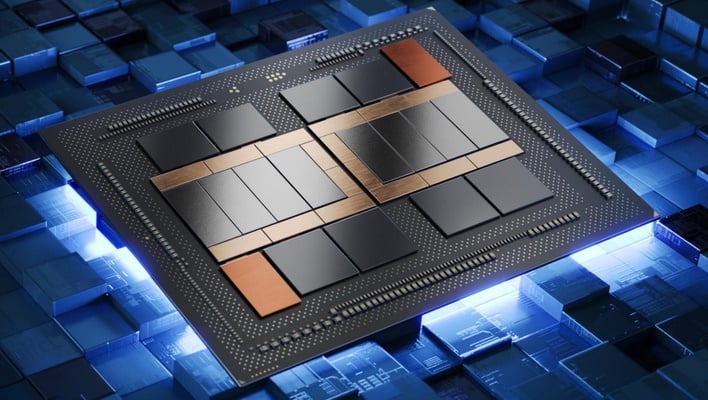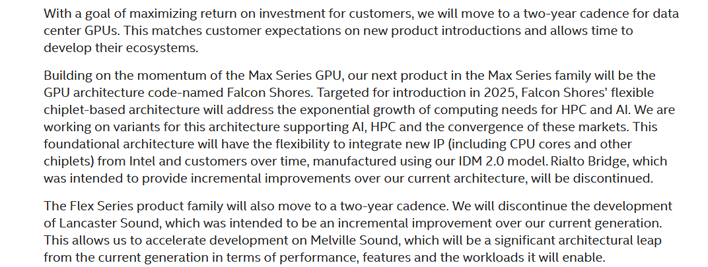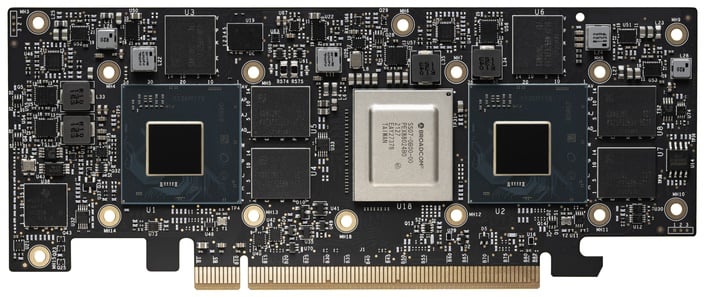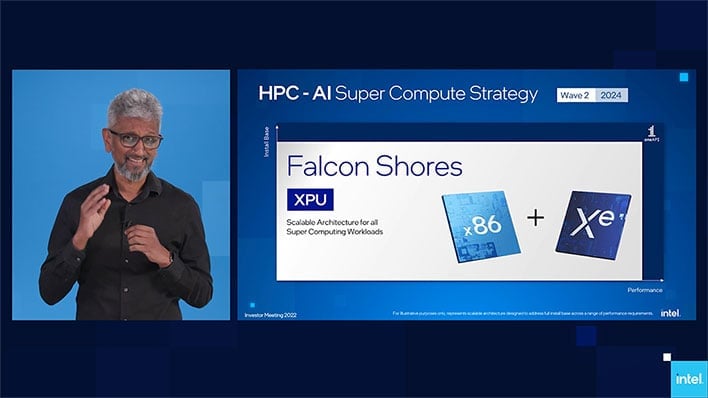Intel AXG Streamlines Data Center GPU Roadmap Underscored With A 2 Year Cadence

Throughout the end of last year and the beginning of this year, Intel finally released its full line of data center-focused Arctic Sound and Ponte Vecchio GPUs, as well as its Sapphire Rapids CPUs. These chips have been a long time coming, but they offer solid performance for high performance compute operations, as evinced in their adoption for the Aurora supercomputer at Argonne National Labs.
Last we heard, Intel's Accelerated Computing Group (AXG) was going to follow these GPU parts up with Lancaster Sound and Rialto Bridge. Lancaster sound was planned to be an incremental improvement on Arctic Sound, using a revised Xe-HP architecture, while Rialto Bridge was going to be a refined Ponte Vecchio with improved density leading to a higher core count.

It turns out that neither of those parts are destined to see the light of day. In an editorial posted on Intel's website, Corporate Vice President and Interim General Manager of AXG Jeff McVeigh announced the cancellation of both product lines. This isn't the death of Intel's GPU efforts, though; far from it. Instead, Intel is making what is probably a smart move in the long term.
This announcement lines up neatly with statements made recently by Tom "TAP" Petersen about Intel simplifying its approach in the consumer graphics sector. Intel's original plans for Xe included numerous different architectures targeting a wide variety of specific applications, and the company found that it was just too difficult to manage and too inefficient. Instead, the company is taking a much simpler approach similar to NVIDIA and AMD: make one or two graphics architectures at a time, and adapt those parts for multiple applications.
Falcon Shores will host any mixture of x86 and Xe cores for versatile compute.
We don't have any information on Melville Sound, but we expect it will be a datacenter adaptation of the Battlemage GPU that should power the next generation of Arc graphics cards. Meanwhile, Falcon Shores will be Intel's first "XPU", a tile-based part with the ability to mix Xe2 graphics cores and x86 CPU cores on a single package.
That won't show up until 2025, though. McVeigh says Intel is moving to a two-year cadence for data-center GPU parts. Given that the company's Flex Series and Max Series GPUs have only just released, we this can expect to wait another 18 - 24 months before the next generation comes along.



